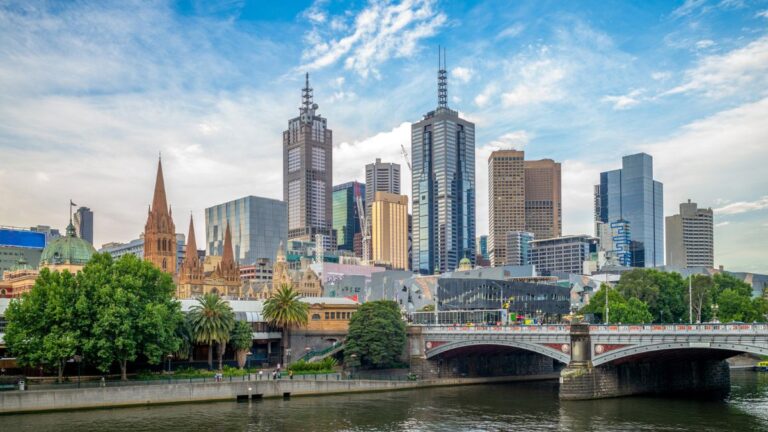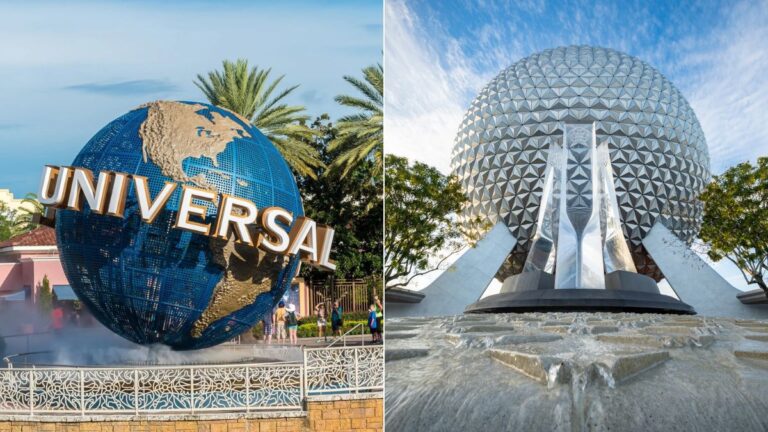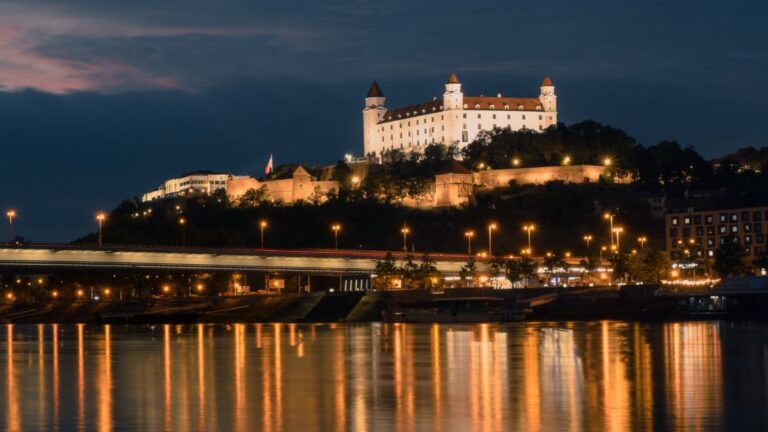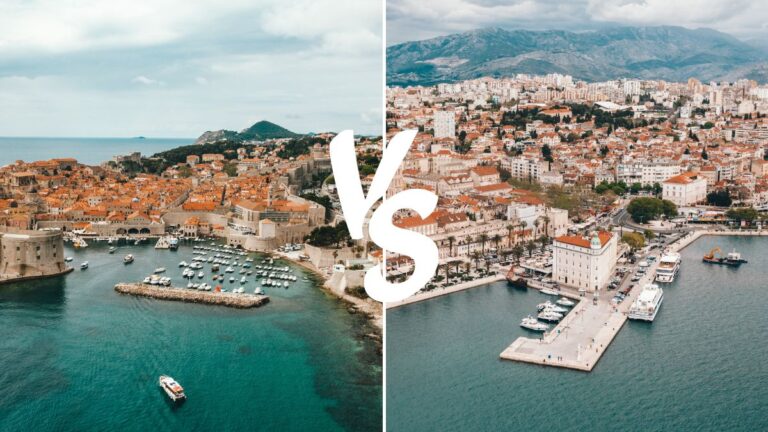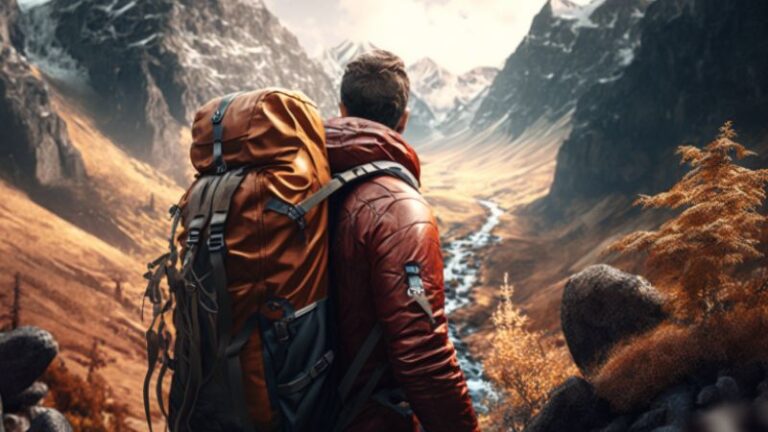Worst Time to Visit Mexico: Navigating Hurricane Risks and Crowded Holiday Seasons
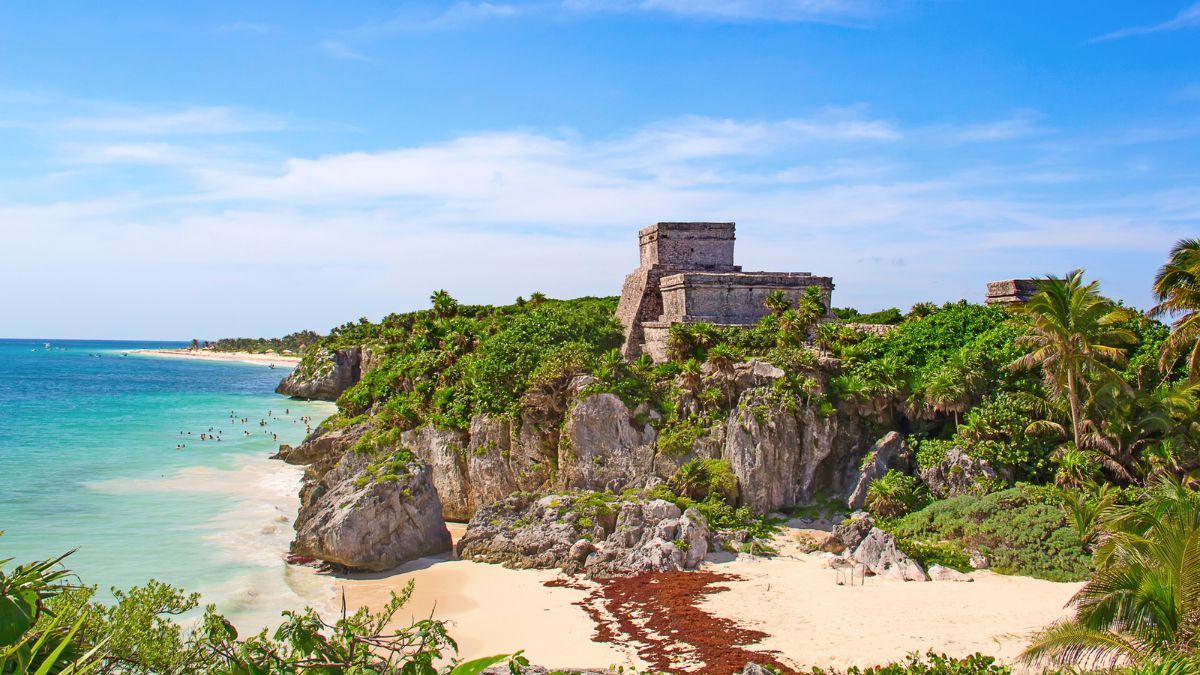
As participants in Amazon Associates and other programs, we earn from qualifying purchases. This comes at no additional cost to you. For more details, see our Affiliate Disclosure.
While Mexico’s diverse landscapes, rich culture, and sun-soaked beaches beckon travelers worldwide, certain times of the year may not offer the ideal vacation experience. Navigating through crowded holiday seasons can dampen the holiday spirit, and looming hurricane risks might put a damper on those beachside dreams. Knowing when not to visit can be as crucial as knowing the must-visit spots, ensuring your Mexican getaway remains memorable for all the right reasons.
HIGHLIGHTS
- The hurricane season, particularly between June and November, is a risky period for travel to Mexico.
- Crowded holiday seasons can also influence the travel experience, making it essential to plan accordingly.
- It’s crucial to stay updated with local weather forecasts and be flexible with travel plans to navigate unpredictable situations.
- Off-the-beaten-path destinations in Mexico can offer serene experiences away from the usual tourist crowds.
Understanding Mexico’s Hurricane Season: What You Need to Know
Mexico, with its expansive coastline on both the Pacific Ocean and the Gulf of Mexico, is no stranger to the annual hurricane season. These powerful storms can pose risks to both residents and travelers, making it essential to understand when they’re most likely to occur and the areas most vulnerable to their impacts.
1. The Basics of the Hurricane Season
Hurricanes are tropical cyclones that form over warm ocean waters. In the North Atlantic, the Caribbean Sea, and the Gulf of Mexico, they’re referred to as “hurricanes”, whereas in the Northwest Pacific, they’re called “typhoons”. Mexico’s hurricane season typically runs from June to November, with peak activity between August and October.
2. Pacific Coast vs. Gulf Coast: Different Timelines
The Pacific and Atlantic (Gulf of Mexico and Caribbean Sea) coasts of Mexico experience slightly different hurricane seasons. While both coasts are active from June to November, the Pacific coast sees its peak in September, whereas the Gulf Coast sees its peak slightly later, in October.
3. Vulnerable Areas
While hurricanes can affect many parts of Mexico, the Yucatán Peninsula, including Cancun, Playa del Carmen, and Cozumel, is particularly vulnerable due to its geographical location. On the Pacific side, Baja California Sur, including tourist hotspots like Los Cabos, can also be affected.
4. Preparation and Response
Mexico has a robust system in place for tracking hurricanes and issuing warnings. Tourist areas, in particular, have well-established protocols to ensure the safety of visitors. This includes evacuations if necessary and ensuring accommodations are storm-ready.
5. Historical Hurricanes
Over the years, several hurricanes have made landfall in Mexico, causing varying degrees of damage. Some of the most notable include Hurricane Wilma in 2005 and Hurricane Patricia in 2015. Knowing the historical context can give travelers a clearer picture of the potential risks.
6. Travel Insurance and Hurricanes
If traveling during hurricane season, it’s wise to consider purchasing travel insurance that covers natural disasters. Ensure the policy includes provisions for trip cancellations, delays, and emergency evacuations related to hurricanes.
7. Staying Informed
Always stay updated on the latest weather forecasts when traveling during the hurricane season. Utilize local news outlets, the National Hurricane Center’s website, and apps that provide real-time updates on storm developments.
In conclusion, while the allure of Mexico’s beaches, culture, and cuisine is undeniable, understanding and preparing for the hurricane season is crucial for those planning to visit during these months. With the right precautions and awareness, travelers can mitigate the risks and enjoy their stay in this beautiful country.
Popular Holidays in Mexico: When the Crowds Surge
Mexico’s rich tapestry of history and culture is on full display during its various holidays and celebrations. These events, though vibrant and captivating, often lead to packed streets, booked hotels, and crowded attractions. Understanding these popular holidays can help you plan your trip accordingly, avoiding high tourist influx if you’re seeking a more serene experience or embracing the festivities if you’re eager to dive into authentic Mexican celebrations.
1. Día de los Muertos (Day of the Dead)
- When: November 1-2
- What to Expect: One of Mexico’s most iconic celebrations, this holiday honors deceased loved ones through vibrant parades, decorated altars, and traditional costumes. Tourist destinations like Oaxaca and Mexico City offer particularly elaborate festivities.
2. Semana Santa (Holy Week)
- When: The week leading up to Easter Sunday
- What to Expect: This religious holiday sees Mexicans attending church services, processions, and reenactments of the Passion of Christ. Beach destinations are particularly crowded as locals flock there for vacation.
3. Navidad (Christmas)
- When: December 24-25
- What to Expect: Traditional meals, midnight Mass, and festive decorations are common. The season begins early December with the Feast of Our Lady of Guadalupe and continues with Las Posadas processions.
4. Año Nuevo (New Year’s Eve)
- When: December 31
- What to Expect: Firework displays, late-night parties, and family gatherings are widespread. Beach destinations, especially, see a surge in both local and international tourists.
5. Mexican Independence Day
- When: September 16
- What to Expect: Parades, fireworks, and the iconic “Grito de Dolores” (shout of Dolores) reenactment at midnight on the 15th. The entire country erupts in patriotic fervor.
6. Cinco de Mayo
- When: May 5
- What to Expect: Contrary to popular belief, Cinco de Mayo isn’t widely celebrated in Mexico as it is in the U.S. It commemorates the Battle of Puebla and is most notably observed in the city of Puebla with parades and reenactments.
7. Revolution Day (Día de la Revolución)
- When: November 20
- What to Expect: Celebrating the Mexican Revolution of 1910, you’ll witness parades, rodeos, and various public celebrations, particularly in Mexico City.
8. Patron Saint Festivals
- When: Varying dates
- What to Expect: Each town and village in Mexico has a patron saint whom they honor with annual festivals. These can be particularly charming, offering a glimpse into local traditions and customs.
While these holidays infuse Mexico with unparalleled energy and joy, they can also result in crowded venues and higher travel costs. Depending on your travel preferences, you might choose to embrace these festivals or plan your visit during quieter times to experience a different side of Mexico.
Traveler Tips: Minimizing Risk During Hurricane Months
Navigating the vibrant landscapes of Mexico during hurricane season presents both allure and challenge. While this time might promise fewer crowds and alluring deals, it’s also riddled with the unpredictability of Mother Nature. But fear not! By arming yourself with knowledge, picking destinations judiciously, and weaving flexibility into your travel arrangements, you can relish in Mexico’s splendors while dodging the most capricious of weather woes.
Stay Informed
Before embarking on your journey, it’s crucial to stay updated on the current weather conditions. This means regularly checking websites like the National Hurricane Center for any developing storm news.
Moreover, consider downloading weather apps such as AccuWeather. These tools not only offer real-time storm tracking but can send you immediate alerts if a storm is brewing near your travel locale.
Choose Your Destination Wisely
Your choice of destination can significantly influence your hurricane experience. Inland cities such as Guadalajara and Mexico City typically sidestep the worst of hurricane impacts. If you’re adamant about a coastal getaway, do a bit of homework.
Some coastlines, be it Pacific or Gulf, may have fewer hurricane encounters during certain months. A bit of historical weather research can point you towards safer shorelines for your chosen travel dates.
Flexible Travel Plans
Flexibility is a traveler’s best friend during hurricane season. Begin with purchasing comprehensive travel insurance, ensuring it covers potential hurricane-related disruptions. This coverage can prove invaluable if storms force you to alter or cancel plans.
When making reservations for flights or accommodations, lean towards options that offer refundable terms. This way, if the weather throws a curveball, you can adjust your plans without bearing the brunt of heavy cancellation fees.
Planning Ahead: Alternative Activities During Peak Times
Mexico’s peak seasons, punctuated by vibrant festivals and the ebb and flow of tourist crowds, can often mean that popular attractions are swamped with visitors. But this doesn’t mean you have to sacrifice the quality of your experience. By thinking outside the box and planning ahead, you can discover a plethora of alternative activities that allow you to soak in the country’s culture, beauty, and history away from the masses.
Explore Lesser-Known Towns: While cities like Cancun, Playa del Carmen, and Mexico City magnetize the majority of tourists, smaller towns like Sayulita, Guanajuato, and San Cristóbal de las Casas offer a unique blend of history, culture, and charm, without the overwhelming crowds.
Culinary Expeditions: Venture beyond the main tourist areas to discover local markets, family-owned restaurants, and street food stalls. Consider taking a cooking class to delve deeper into the flavors of Mexican cuisine and learn how to recreate them at home.
Nature Retreats: Mexico is home to numerous national parks, reserves, and untouched natural landscapes. Instead of the popular beaches, you might find tranquility in places like the Sumidero Canyon, the Monarch Butterfly Biosphere Reserve, or the Sierra Gorda Biosphere Reserve.
Art and Craft Tours: Delve into Mexico’s rich artisan heritage by visiting local workshops, craft markets, or taking pottery or textile classes. Towns like Oaxaca and San Miguel de Allende are known for their vibrant arts scenes.
Wellness and Spiritual Journeys: Beyond its scenic beauty, Mexico is also a hub for wellness retreats. From yoga classes on the Pacific coast to traditional Temazcal ceremonies, there’s an array of experiences waiting for those seeking rejuvenation.
Historical Routes: Instead of the most visited archaeological sites, explore off-the-beaten-path ruins like Calakmul, Yaxchilán, or the Guachimontones. These sites might offer a more intimate and peaceful exploration experience.
By approaching your visit with an open mind and a willingness to explore beyond the most popular attractions, you can create a memorable Mexican journey, even during peak times. It’s all about finding those hidden gems and authentic experiences that resonate most with your travel aspirations.
Mexico’s Off-Peak Gems: Where to Go When Others Don’t
While many flock to Mexico’s most renowned spots during peak travel times, the country’s vast landscapes are dotted with hidden jewels that shine especially bright during the off-peak season. Venturing to these lesser-trodden paths not only ensures a serene experience but also offers an intimate glimpse into Mexico’s diverse culture, history, and natural beauty.
- Mazunte, Oaxaca: Far from the bustle of more popular Oaxacan beach destinations, Mazunte boasts pristine beaches, a laid-back vibe, and the fascinating Mexican Turtle Center, dedicated to the preservation of sea turtles.
- Morelia, Michoacán: A UNESCO World Heritage site, this colonial city is adorned with pink stone buildings, historic cathedrals, and local markets. Visit between October and March to catch the nearby migration of the monarch butterflies at the Monarch Butterfly Biosphere Reserve.
- Comitán, Chiapas: While most tourists head to San Cristóbal de las Casas, Comitán remains an understated gem. With its colonial charm, proximity to the Lagunas de Montebello, and El Chiflón Waterfalls, it’s a haven for those seeking both culture and nature.
- Durango: This colonial city offers a fascinating blend of history, with its museums and vintage architecture, and adventure, with nearby natural wonders like the Mexiquillo Forest and the Baluarte Bridge.
- Zacatecas: Another UNESCO World Heritage site, Zacatecas charms with its narrow alleyways, the majestic Cathedral of Zacatecas, and the Mina El Edén, an old silver mine turned museum and nightclub.
- Campeche: A fortified colonial city, Campeche boasts well-preserved ramparts, vibrant building facades, and a tranquil waterfront. Its archaeological sites, like Edzná and Calakmul, are less frequented, offering a quiet exploration experience.
- Guanajuato’s Lesser-Known Surroundings: While Guanajuato City is a favorite among tourists, nearby towns like Dolores Hidalgo, birthplace of the Mexican War of Independence, and Mineral de Pozos, a ghost town turned artist retreat, deserve attention.
- Bahía de Kino, Sonora: Nestled along the Sea of Cortez, this beach town remains relatively undiscovered, offering serene beaches and a genuine Mexican small-town feel, away from the commercialized resorts.
Venturing off the main tourist trail during Mexico’s off-peak season promises not just the peace of fewer crowds, but also the thrill of discovery. Each hidden gem unveils a unique facet of Mexico, waiting to be cherished by those willing to journey a bit further.
Cultural Celebrations and Tourism: Striking the Balance
The allure of cultural celebrations is undeniable. For many travelers, experiencing an authentic festival or ritual can be the highlight of their trip, offering deep insights into the traditions, values, and history of a destination.
However, the convergence of mass tourism and intimate local celebrations can sometimes lead to unintended consequences. Striking a balance between immersing oneself in these experiences and respecting their sanctity is crucial for both visitors and hosts. Here’s how we can navigate this intricate terrain:
Educate Yourself Before You Go:
Understand the significance of the celebration you’re planning to witness. This includes its historical origins, customs, and any taboos. By having a deep appreciation, you can approach the event with respect and reverence.
Be a Conscious Observer:
Recognize that you are an outsider. While it’s tempting to dive into the festivities, there’s value in hanging back and observing. This ensures that you’re not inadvertently disrupting or offending local participants.
Ask Before You Click:
With the proliferation of social media, it’s tempting to capture every moment on camera. However, always ask for permission before photographing people, especially during religious or deeply personal ceremonies. Some rituals might be considered too sacred for photos altogether.
Dress Appropriately:
Many cultural celebrations have a particular dress code, especially those held in religious venues. Always ensure you’re dressed modestly and in line with local customs to show respect.
Support Local Communities:
Buying authentic souvenirs or paying for guided tours by local experts can be a way of giving back. It can also ensure that the financial benefits of tourism are shared within the community.
Limit Environmental Impact:
Crowds can strain local resources. Always ensure you’re minimizing waste, using water judiciously, and not damaging any natural or cultural sites.
Engage with Locals:
Instead of being a passive observer, take the time to interact with locals. This can offer deeper insights and forge connections that enrich your understanding of the celebration.
Travel with Responsible Tour Operators:
Opt for tour operators that have a clear code of conduct for their guests during cultural celebrations. This can ensure that you’re experiencing the event in a way that’s respectful to the hosts.
The key to striking a balance between cultural tourism and respect lies in understanding, empathy, and conscious engagement. By approaching cultural celebrations with an open heart and a mindful attitude, tourists can ensure that they’re adding to the event’s vibrancy without detracting from its essence.
Staying Flexible: Making the Most of Unpredictable Situations
Travel is a journey into the unknown, often punctuated by unforeseen twists and turns. Instead of allowing these unexpected moments to derail your plans, embrace the unexpected. Often, the most enriching memories are born from these unplanned detours.
While it’s beneficial to have a rough itinerary, it’s equally crucial not to over-schedule. Leaving room for spontaneity ensures you can easily pivot when faced with unexpected situations. Plan, but also leave space for the unplanned moments that travel inevitably brings.
Information is a traveler’s best ally. Keep yourself updated by tapping into local resources, be it a chatty cafe owner, a tourism office, or digital platforms. These can provide insights into evolving situations, whether it’s a surprise local festival or sudden transit strikes.
Finally, remember that flexibility is a mindset. When you approach challenges with curiosity and optimism, even mishaps can transform into opportunities. Every twist in the journey offers a chance to learn, grow, and collect stories that will last a lifetime.

